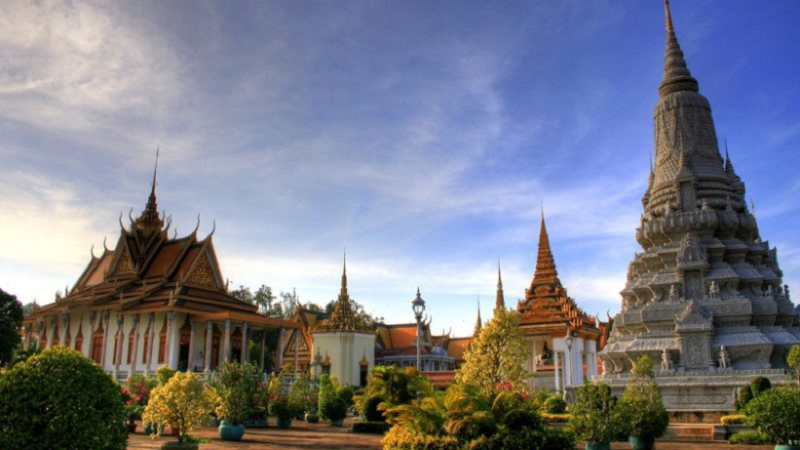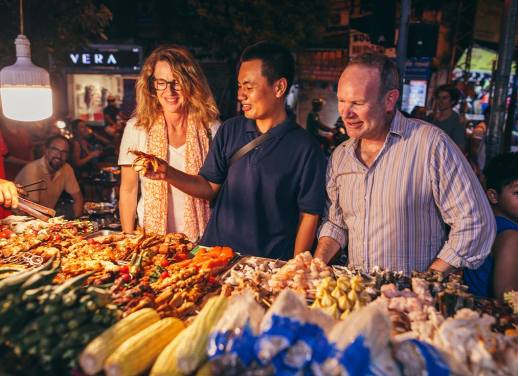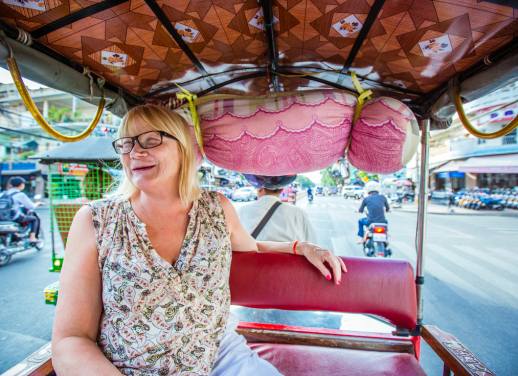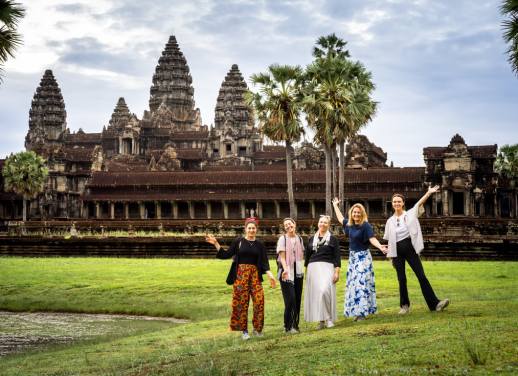Cambodia’s capital city is no one-trick pony; instead, the city heaves with a sombre history, striking architecture and a lesser-known countryside that’ll give travellers something to talk about.
Whether you’re here for a day or a week, there’s more than enough to entice any visitor to come back – and soon!
1. The Royal Palace & Silver Pagoda
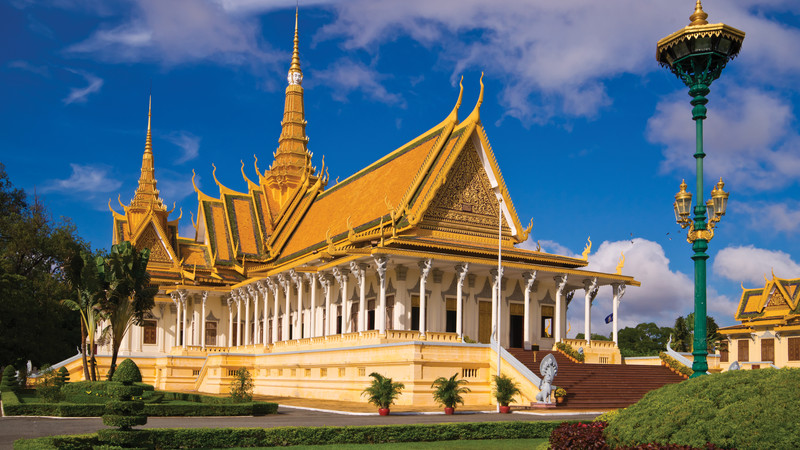
Photo by Ralf Siemieniec, Shutterstock
Based in the heart of Phnom Penh, the Royal Palace is on the must-see list for any visitor. Sitting pretty on the riverfront, it boasts classic architecture from the Khmer era, such as the stunning ornate details that glisten when the sunlight hits it. It’s also the official residence of King Sihamoni; meaning parts of this massive attraction are closed to the public.
EXPLORE CAMBODIA ON A SMALL GROUP ADVENTURE NOW!
Visitors are, however, allowed to visit the eastern wing of the palace, where you can explore the Throne Hall, which is used for coronations and special diplomatic ceremonies. A 59-metre tower sits atop Throne Hall, inspired by the richly decorated Khmer temple, Bayon, at Angkor. Sadly, most of the items once housed in the Palace were destroyed during the Khmer Rouge era, but luckily the Palace itself remains virtually in tact.
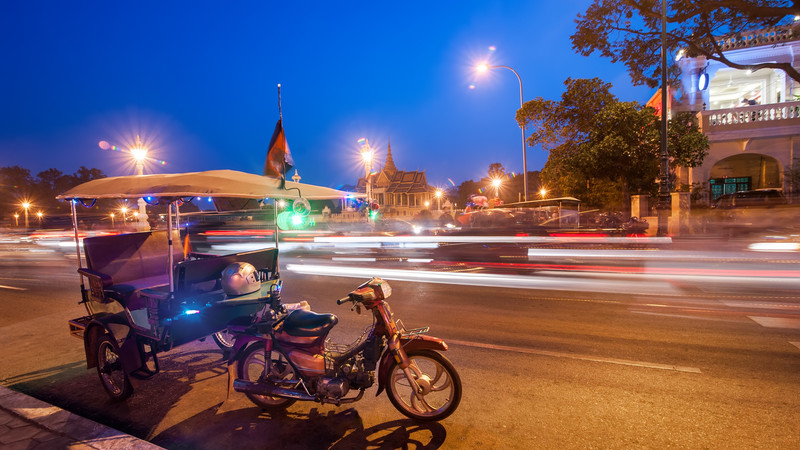
Photo by Perfect Lazybones, Shutterstock
Another popular part of the Palace is the Silver Pagoda, named after its shimmering silver tiles – some say as many as 5000. If you’re observant, you might sneak a peek at some of these tiles near the entrance, however a cover protects most. While the Khmer Rouge stole most of its belongings, the Pagoda still sparkles with intricate masks, golden Buddha statues, ancient artworks, and a life-sized, solid gold Buddha weighing 90 kilograms, decorated with over 2000 diamonds, some as many as 25 carats.
If you don’t mind the idea of being thrown into throngs of local worshippers, aim to visit the Royal Palace on a Sunday, when many countryside Khmers make the trek to pay their respects. As for appropriate dress, ensure your pants are knee-length or longer, and your sleeves cover your elbows.
RELATED: EVERYTHING YOU NEED TO KNOW ABOUT CAMBODIAN CUISINE
2. Phnom Chisor
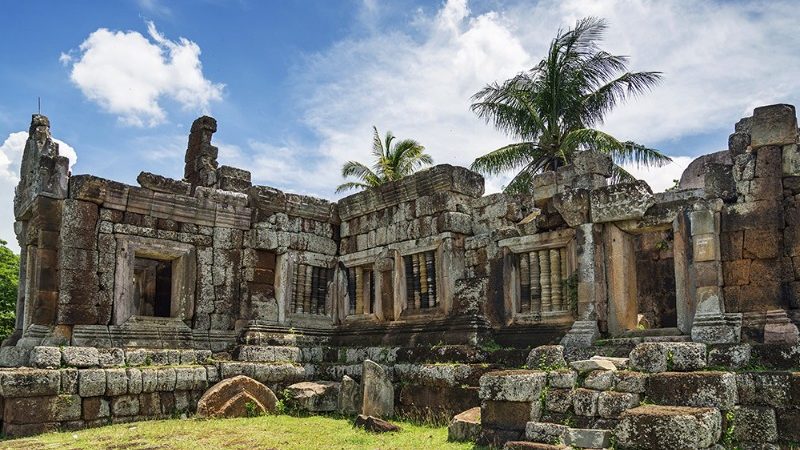
Photo by JM Travel Photography, Shutterstock
If you’ve ‘been there, done that’ with the iconic Angkor Wat temples in Siem Reap, then exploring the ancient temples further south might be just the ticket. A 55 kilometre drive out of Phnom Penh, you’ll stumble upon Phnom Chisor, nestled atop a lone hill in the Takeo Province. With jaw-dropping countryside vistas, you’ll find the main temple on the eastern side of the hill, while on the western side are sanctuaries of Sen Thmol, Sen Ravang, and the sacred pond of Tonlé Om.
More than 900 years ago, the king and his followers would climb 400 steps up to the main temple to host special rituals. Made of laterite (reddish clay) and brick with carved sandstone decoration, the main temple sits inside the semi-ruined walls of a 2.5 metre-wide gallery, marked with inscriptions dating back to the 11th Century. The hike itself only takes about 15 minutes, however is more comfortable if you avoid the midday heat.
To get there, you can arrange a taxi, rent a motorbike, or catch a bus from Phnom Penh for about one dollar, where local moto taxis will take you the rest of the way. Local vendors sit at the base of the hill serving grilled chicken and cold drinks, if you get peckish or parched.
SUBSCRIBE TO INTREPID’S NEWSLETTER FOR TRAVEL TIPS, COMPETITIONS, GIVEAWAYS & MORE
3. Killing Fields & Tuol Sleng Prison Museum
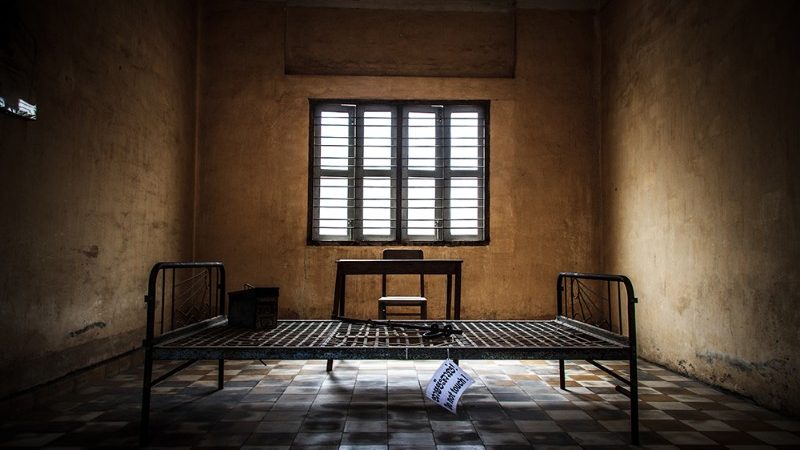
Photo by Alfons Taekema, Shutterstock
The darker side of Cambodia’s history is a significant part of Phnom Penh worth exploring, and something many tours through Cambodia include. As many as 20,000 killing fields are scattered around the country as a result of the Khmer Rouge reign from 1975 to 1978, when up to 2.5 million Cambodians were killed. The largest mass gravesite was Choeung Elk on the outskirts of Phnom Penh, where as many as 17,000 men, women and children were executed. Around 43 of the 129 communal graves remain untouched, while almost 9000 other remains were exhumed in 1980; now, in the centre of the site, sits the Memorial Stupa, a glass tower with more than 8000 of these skulls inside. Many tours include a guide, however most opt for audio tours so they can take their time to pay their respects and learn about this painful history.
Back in the city, the Tuol Sleng Museum remains a disturbing reminder of the crimes; a high school repurposed as a place of detention, Security Prison 21, or S-21 as it was known, displays harrowing photographs of prisoners, both before and after torturing, rooms that were turned into inhumane cell blocks, and instruments of torture. It’s a depressing, but necessary part of visiting Phnom Penh. One or two survivors – there were just seven overall – are still alive and spend time in the prison courtyard, sharing their stories with visitors.
RELATED: MEET CHANNA, THE INTREPID LEADER IN CAMBODIA WITH AN INCREDIBLE STORY
4. Tonlé Bati lake region
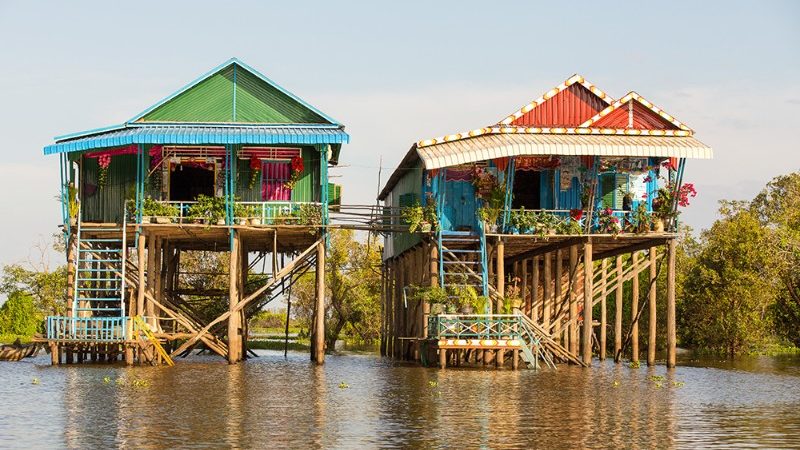
Photo by Tawatchaiwanasri, Shutterstock
If you’ve seen all the markets and dined at all the coffee shops in the city centre, a trip out to Tonlé Bati is a must. A small lake about 30 kilometres south of Phnom Penh, Tonlé Bati is a popular picnic area, where you can rent bamboo shacks built out over the water and spend the day eating, drinking and relaxing. You can dine at one of the many restaurants set on stilts over the water, pick up snacks at roadside stalls, or purchase food from ladies floating by in their wooden boats. You can also hire an inner tube and float around the lake for less than a dollar; despite the water not looking very inviting, locals frequently swim in there. And if you’re a fan of people watching, you’ll find it here in spades.
If reclining in your private hut gets to be too much, the ancient temples of Ta Promh and Yeay Peov, as well as the Wat Tonlé Bati pagoda, are ripe for exploring. Weekdays are the best time to visit when it’s not overrun by locals, with motorbike or car rentals the easiest way to get there.
RELATED: CAMBODIA IN ONE WEEK: THE ULTIMATE GUIDE
5. Sunset cruise on the Mekong
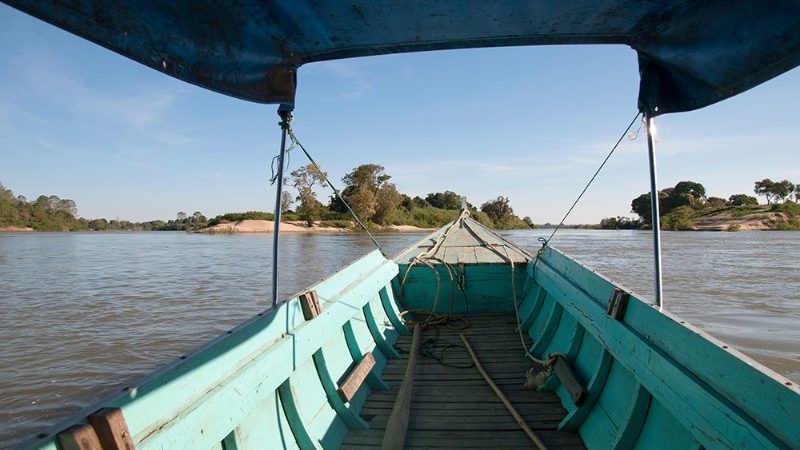
Photo by demamiel62, Shutterstock
Another fantastic way to experience Phnom Penh is on the river itself. Whether you book a sunset dinner cruise – complete with traditional Khmer music and cuisine – or you arrive via Mekong Island, it’s a great way to cap off a visit to the capital city. On tours such as the latter, you’ll leave the city via the Japanese Friendship Bridge, which was rebuilt by the Japanese after being blown up in the 1975 fighting, and explore the famous silk weaving and agriculture of Mekong Island. River tours kick off at the junction of the Tonlé Bassac, Tonlé Sap and Mekong River and sail past floating villages, beautiful architecture, and historical buildings like Wat Ounalom and the Royal Palace, as well as ruins leftover from times of war.
Ready to start exploring Cambodia? Of course you are! Start by exploring our range of small group adventures now.

